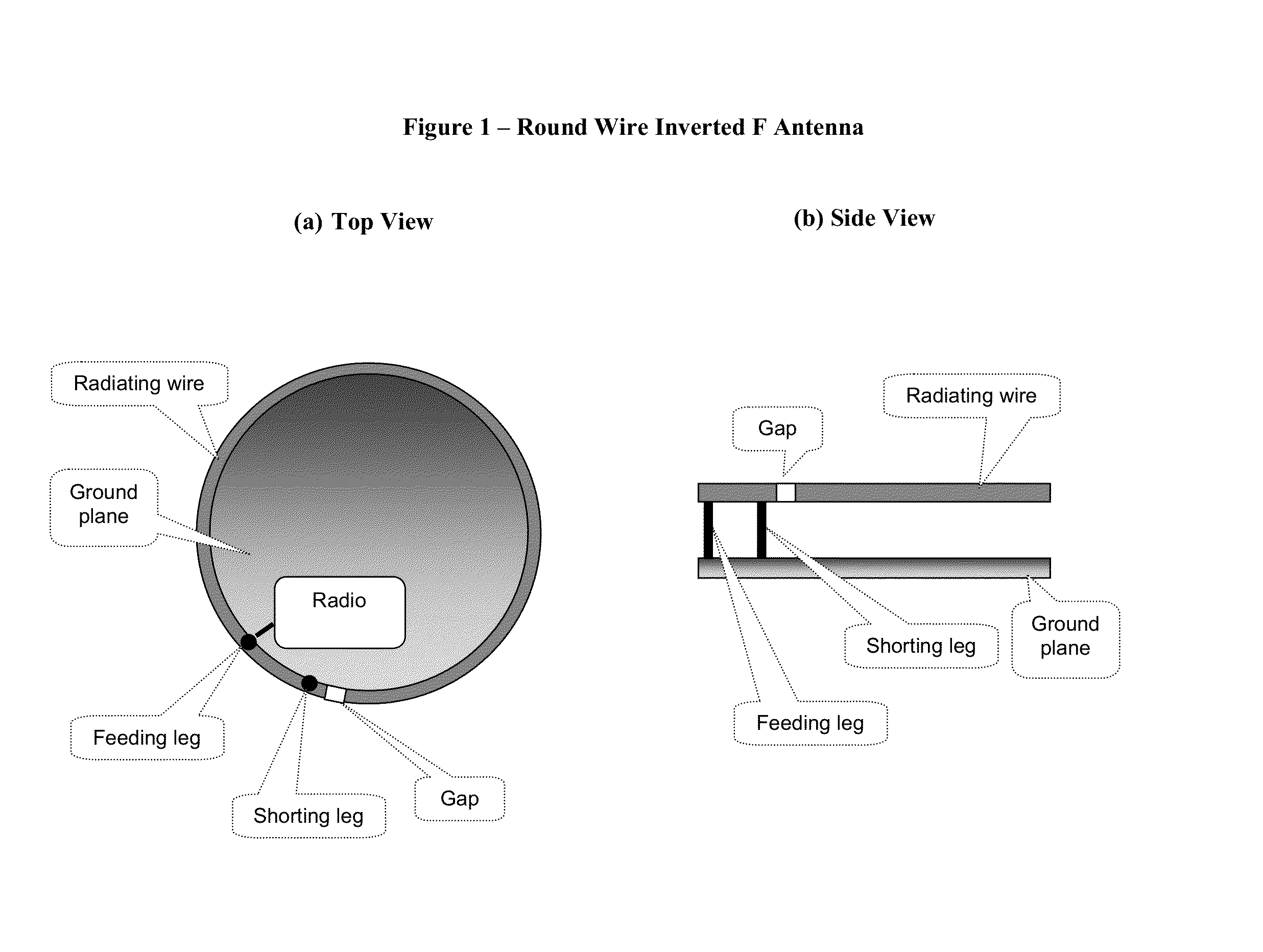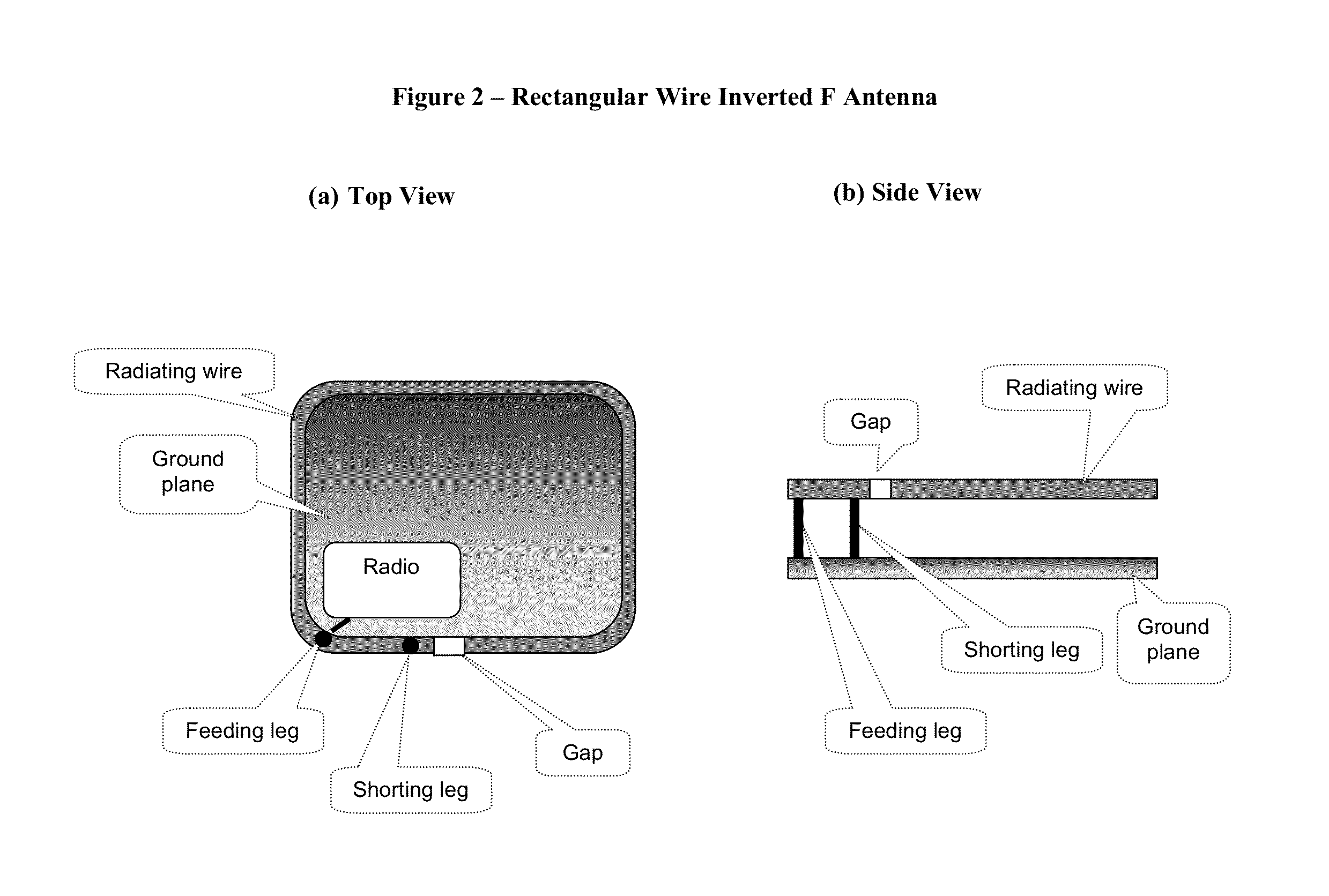Wrist Worn Device with Inverted F Antenna
a technology of inverted f antenna and wristband, which is applied in the field of wireless communication, can solve the problems of difficult to design an efficient antenna constraint to a relatively low volume, and increase the complexity of the antenna design, and achieve the effect of less flexibility
- Summary
- Abstract
- Description
- Claims
- Application Information
AI Technical Summary
Benefits of technology
Problems solved by technology
Method used
Image
Examples
second embodiment
[0090]According to the present invention, the radio is a GNSS (Global Navigation Satellite System) receiver, e.g. the US GPS or Russian GLONASS or European Galileo, but particularly compatible with the US Global Positioning System (GPS). Then, the antenna is configured to the 1575 MHz band, where a quarter wave length is equal to about 5 cm. In this case, the ground plane can be configured to a circumference of about 5 cm, or larger and then the radiating wire would probably not cover all that circumference but obtain a relatively large gap between its ends.
[0091]Further according to a preferred embodiment of the present invention, the communication device is configured to be worn on a human body, particularly on the wrist, wherein the ground plane configured between the human body and the radiating wire.
[0092]FIG. 5 illustrates a Wrist Worn Communication Device according to the present invention. The device is shown worn on a human wrist, in (a) top view and (b) side view. It can b...
fourth embodiment
[0098]FIG. 9 illustrates a Wrist Worn Communication Device In background of Satellite System, according to said fourth embodiment of the present invention. A human hand is depicted, with a communication device, shown in (cut section) side view mounted on the wrist. The side view of the communication device shows a radiating wire placed in parallel and over a ground plane (ground plane close to wrist), with a feeding leg and shorting leg perpendicular to the ground plane. Also, a display and a GPS antenna are shown on the ground plane. GPS satellites are illustrated on the upper part of the figure, broadcasting signals apparently arriving to the GPS antenna, while the radiating wire on top of the communication device is shown transmitting a signal arriving at the illustrated SAR satellite on the upper part of the picture.
[0099]According to said fourth embodiment of the present invention, the communication device additionally comprises a temperature sensor, and a barometric pressure s...
PUM
 Login to View More
Login to View More Abstract
Description
Claims
Application Information
 Login to View More
Login to View More - R&D
- Intellectual Property
- Life Sciences
- Materials
- Tech Scout
- Unparalleled Data Quality
- Higher Quality Content
- 60% Fewer Hallucinations
Browse by: Latest US Patents, China's latest patents, Technical Efficacy Thesaurus, Application Domain, Technology Topic, Popular Technical Reports.
© 2025 PatSnap. All rights reserved.Legal|Privacy policy|Modern Slavery Act Transparency Statement|Sitemap|About US| Contact US: help@patsnap.com



